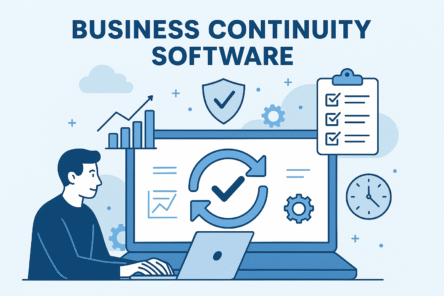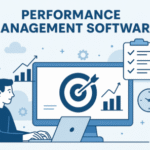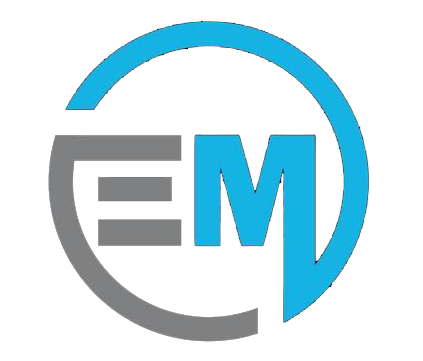Business Continuity Software: A Comprehensive Guide for 2024
In an era marked by frequent disruptions—whether from cyberattacks, natural disasters, or supply chain issues—businesses must be prepared to maintain operations and recover quickly. Business continuity software plays a pivotal role in ensuring that organizations can continue operating even in the face of these challenges. By providing tools for risk management, disaster recovery, and operational resilience, business continuity software helps businesses minimize downtime, protect vital data, and safeguard their reputation.
This comprehensive guide explores the importance of business continuity software, its key features, benefits, and the top software solutions available in 2024.
1. What is Business Continuity Software?
Business continuity software is a tool designed to help businesses plan for and respond to emergencies that could disrupt normal operations. It provides solutions for risk assessment, disaster recovery, incident management, and business impact analysis. The goal of business continuity software is to ensure that critical business functions can continue during and after a crisis, allowing the organization to minimize downtime, protect its assets, and recover more efficiently.
Business continuity software typically integrates with other IT systems to provide a holistic approach to disaster recovery, enabling businesses to test, manage, and execute their continuity plans effectively.
2. Why is Business Continuity Important?
Business continuity is crucial for several reasons:
Minimizing Downtime: Downtime can be costly, affecting revenue, reputation, and customer trust. Business continuity software helps minimize these risks by ensuring that operations can continue or quickly resume.
Disaster Recovery: In the event of a disaster, business continuity software provides the framework for recovering critical systems and data to prevent long-term disruptions.
Compliance Requirements: Many industries are subject to regulatory requirements that mandate businesses have business continuity plans in place to protect data and ensure operational resilience.
Data Protection: Business continuity software ensures that sensitive data is backed up and can be quickly restored in the event of an attack, hardware failure, or disaster.
Employee Safety and Communication: Business continuity software helps businesses manage internal communications during a crisis, ensuring that employees are safe and informed.
3. Key Features of Business Continuity Software
When selecting business continuity software, it’s essential to look for the following features:
Risk Assessment and Management: The software should provide tools for identifying and assessing risks, from natural disasters to cyber threats, and developing strategies to mitigate those risks.
Disaster Recovery Planning: The software should allow businesses to create, manage, and execute disaster recovery plans to ensure that IT systems can be restored quickly after an incident.
Business Impact Analysis (BIA): The software should enable businesses to analyze and prioritize critical functions and processes to determine how quickly they need to be restored in the event of a disruption.
Data Backup and Restoration: The software should provide solutions for backing up critical data and systems and allow businesses to recover them quickly in the event of a disaster.
Cloud Integration: Cloud-based business continuity software provides scalability and flexibility, allowing businesses to store backups and recover data from the cloud.
Automated Alerts and Notifications: The software should offer real-time alerts to inform stakeholders of any disruptions or incidents, allowing for quick responses.
Testing and Simulation: A good business continuity solution allows businesses to simulate disaster recovery scenarios to test the effectiveness of their plans and ensure readiness.
Reporting and Analytics: The software should provide comprehensive reporting tools to track incidents, recovery efforts, and recovery times, enabling businesses to continuously improve their continuity strategies.
4. Top Business Continuity Software Solutions for 2024
1. Veeam
Veeam is a leading provider of backup, disaster recovery, and business continuity software solutions. It is known for its robust cloud data management capabilities, enabling businesses to ensure data availability, backup, and disaster recovery across hybrid cloud environments.
Best for: Enterprises looking for a comprehensive disaster recovery solution with advanced backup and monitoring tools.
Key Features: Cloud data management, continuous data protection, disaster recovery orchestration, backup, and replication.
Pricing: Custom pricing based on business needs.
2. Zerto
Zerto provides cloud-based disaster recovery and business continuity software that focuses on minimizing downtime and ensuring rapid recovery. Its solution supports disaster recovery for virtualized and cloud-based environments, making it a popular choice for companies with complex IT infrastructures.
Best for: Organizations with virtualized environments and multi-cloud strategies looking for an integrated disaster recovery solution.
Key Features: Continuous data protection, disaster recovery automation, hybrid cloud support, replication, and failover testing.
Pricing: Custom pricing based on company size and deployment requirements.
3. Datto
Datto offers a complete business continuity solution for small and medium-sized businesses. Its platform includes backup, disaster recovery, and business continuity solutions that are simple to implement and scale as needed.
Best for: Small and medium-sized businesses looking for an all-in-one business continuity platform with an easy-to-use interface.
Key Features: Cloud and hybrid backup, disaster recovery, business continuity, network monitoring, and data protection.
Pricing: Starts at $99 per month (pricing varies based on plan and business size).
4. Acronis
Acronis provides data backup, disaster recovery, and business continuity software with a focus on protecting both on-premise and cloud data. It offers an integrated solution that ensures business continuity through fast data recovery and a centralized management console.
Best for: Businesses that need both data protection and disaster recovery across physical, virtual, and cloud environments.
Key Features: Backup, disaster recovery, data protection, ransomware protection, and centralized management.
Pricing: Starts at $49.99 per year for the backup solution.
5. Continuity Logic
Continuity Logic is a business continuity software solution focused on risk management, disaster recovery, and emergency response planning. It provides a comprehensive suite of tools for business continuity planning, including risk assessments, impact analyses, and recovery strategies.
Best for: Mid-market to enterprise businesses seeking an end-to-end business continuity solution with risk management and compliance features.
Key Features: Business impact analysis, risk assessments, incident management, recovery plan automation, and reporting.
Pricing: Custom pricing based on company size and requirements.
5. How to Choose the Right Business Continuity Software
Choosing the right business continuity software involves considering factors such as:
Business Size and Complexity: Larger enterprises may require more sophisticated solutions with enterprise-grade features, while smaller businesses may benefit from simpler, more affordable options.
Integration with Existing Systems: Ensure that the software integrates seamlessly with existing IT systems, backup tools, and cloud platforms.
Ease of Use and Implementation: Choose software that is user-friendly and easy to implement, with comprehensive training and support available.
Scalability: Consider software that can scale as your business grows and as new risks emerge.
Vendor Support and Updates: Evaluate the vendor’s customer support options and the frequency of software updates, which are essential for keeping your business continuity plan up to date.
6. Benefits of Business Continuity Software
Reduced Downtime: Ensures that critical systems can be restored quickly, minimizing the financial impact of disruptions.
Improved Risk Management: Helps businesses identify, assess, and mitigate risks before they become significant problems.
Data Protection: Provides robust backup and recovery tools to protect sensitive data from loss or corruption.
Compliance: Many industries require businesses to have business continuity plans, and using software helps ensure compliance with regulations.
Operational Resilience: Enhances a company’s ability to recover from a crisis and maintain operations during emergencies.
7. Common Challenges with Business Continuity Software
Cost: The implementation of business continuity software can be expensive, especially for small businesses.
Complexity: Some solutions can be complex to set up and require ongoing maintenance and testing.
Integration: Integrating business continuity software with existing IT infrastructure and tools can be challenging.
User Adoption: Employees may resist using the software, especially if it’s perceived as too complicated or unnecessary.
8. Future Trends in Business Continuity
Cloud-First Solutions: More businesses are adopting cloud-based business continuity solutions to ensure flexibility, scalability, and cost-effectiveness.
AI and Automation: Artificial intelligence will play an increasing role in automating disaster recovery processes and predicting risks.
Cybersecurity Integration: As cyberattacks become more common, business continuity software will integrate with cybersecurity tools to provide end-to-end protection.
Real-Time Data Recovery: Advances in data recovery technology will allow businesses to restore systems more quickly, minimizing downtime during disasters.
9. Conclusion
Business continuity software is an essential tool for ensuring that organizations can continue operating during and after disruptions. With the right software, businesses can reduce downtime, protect critical data, and recover quickly from disasters. By selecting the right solution based on your business size, needs, and risks, you can build a resilient organization that is prepared
for whatever challenges lie ahead.



